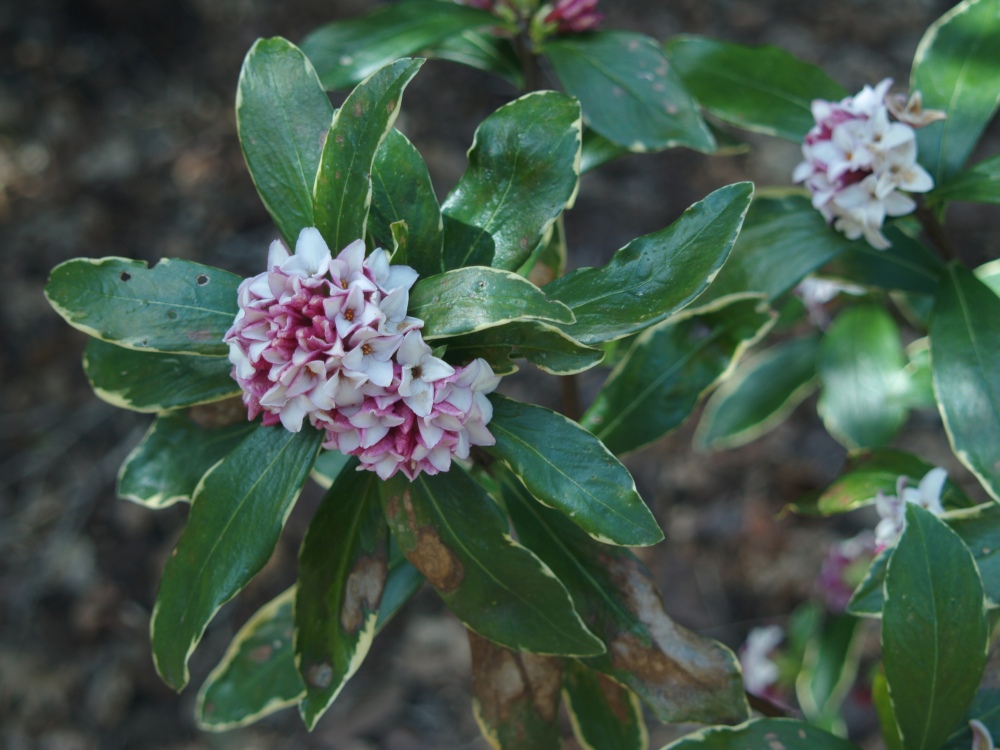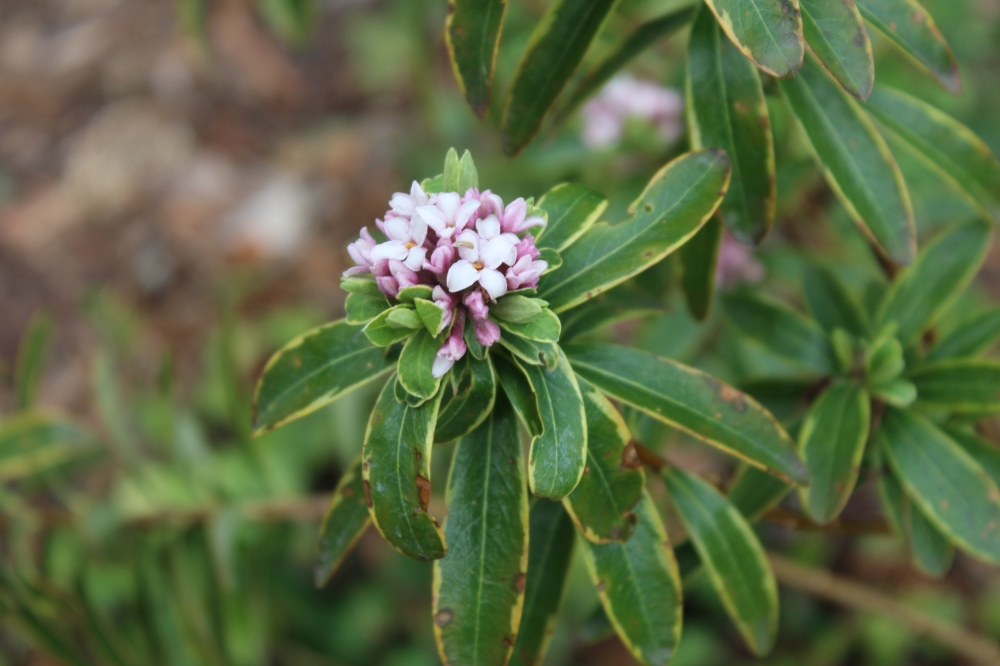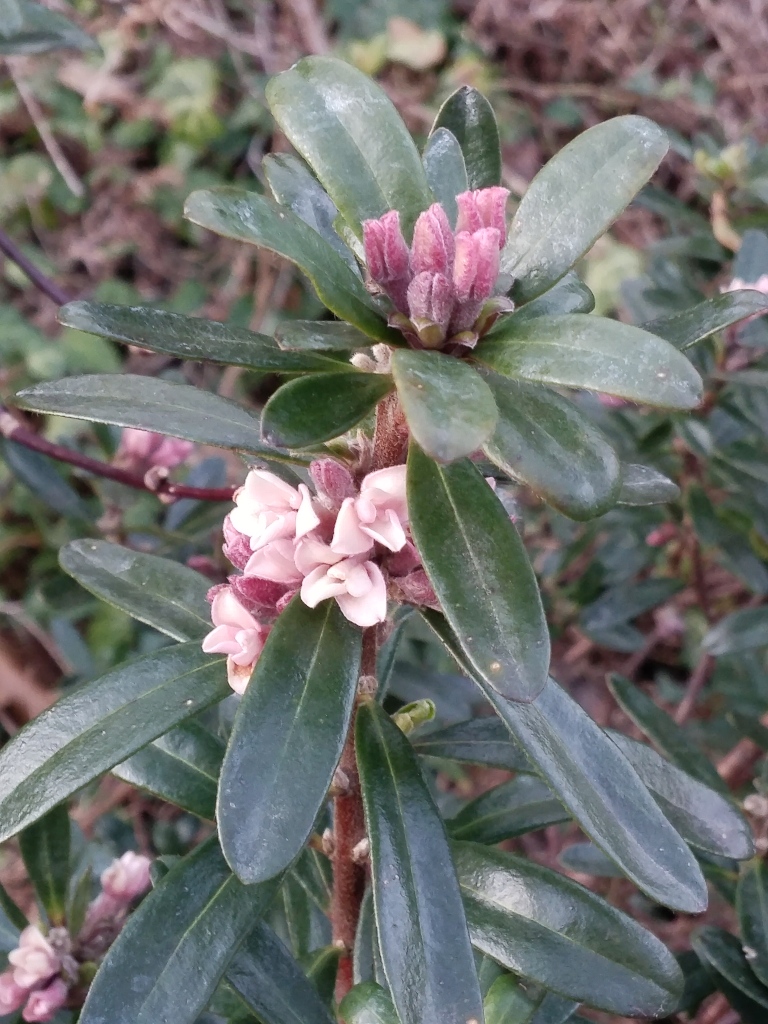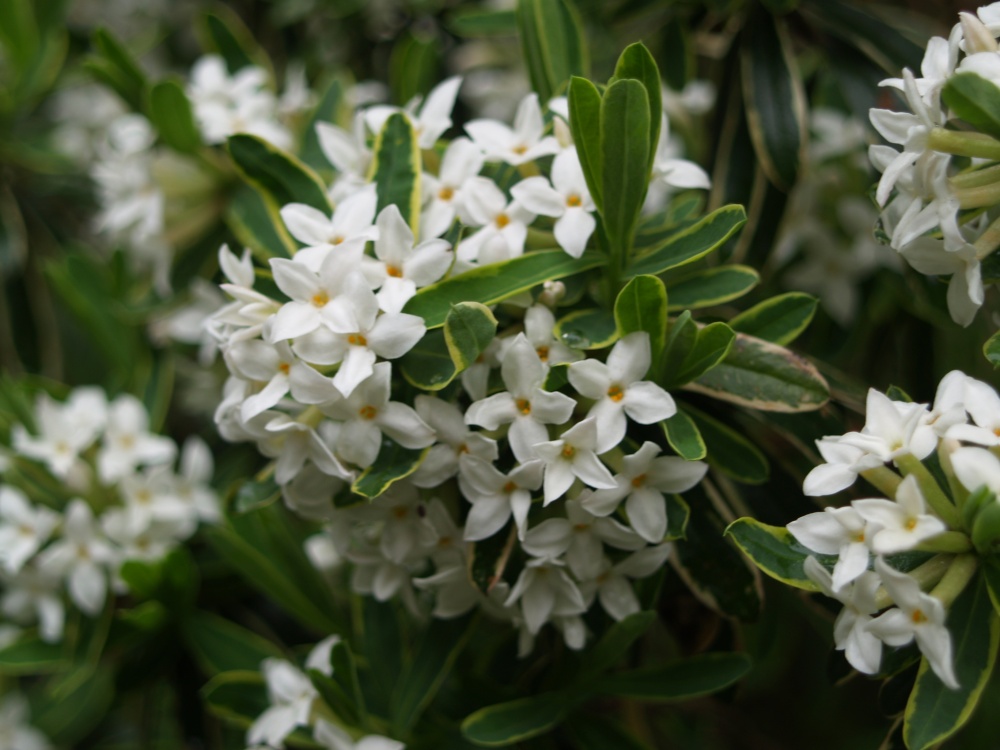Flowers of the variegated Winter daphne (Daphne odora ‘Aureomarginata’, below) opened near the beginning of March, which is not abnormally early despite prolonged warm temperatures through much of February. In a few years, daphnes have bloomed in this garden in early February, but also the third week of March after a chilly late winter, and regardless of early or late the flowers are occasionally damaged by a late freeze. Winter daphne is dependably cold hardy only to zero, and in recent winters when temperatures dropped several degrees colder, stems were damaged and flowers lost except for the few closest to the ground.

Hybrid daphnes (Daphne x transatlantica) will tolerate more cold with no damage to foliage through our coldest winter, and often I notice swelling flower buds by early February. First flowers are usually seen by late March, with peak bloom a few weeks later and scattered flowers into November.

‘Summer Ice’ daphne (Daphne x transatlantica ‘Summer Ice’, above) was disappointingly small when planted a year ago, not that it was a surprise because I picked it out of the garden center, but it was small enough that I expected it could be years before it would amount to much. To my amazement, it continued to flower, and to grow through the heat of summer to nearly double in size. The variegated foliage of ‘Summer Ice’ is a welcome improvement over the unremarkable green foliage of ‘Eternal Fragrance’ (below), which is also vigorous in growth. My sense of smell is horribly lacking, but most gardeners brag on daphnes’ delightful scent as reason enough to include them in the garden.

Perhaps its scent is stronger, but the fragrance of the later blooming ‘Carol Mackie’ (Daphne × burkwoodii ‘Carol Mackie, below) is more noticeable to me. While ‘Summer Ice’ and ‘Eternal Fragrance’ are evergreen, ‘Carol’ will drop its leaves in a spell of typical winter cold. Its flowers are more abundant, but the period of bloom is weeks, not months. 
The concern that I often hear is that daphnes are finicky, that they will up and die for no apparent reason, and probably there’s something to this. I’ve had minor issues with Winter daphne and ‘Carol Mackie’, though not enough to think they’re a problem. I’ve seen no issues with the hybrids, and next to add will be ‘Jim’s Pride’ and ‘Brigg’s Moonlight’. If necessary, something else will be moved out of the way to give the daphnes a prominent spot.
Lovely to see all your Daphne – my odora ‘Aureomarginata’ has been filling the garden with wonderful smells for weeks now. And it’s good to know that ‘Eternal Fragrance’ is vigorous. I planted a very weedy specimen last year and its unremarkableness has led me to consider dumping it. But having read your post I will give it another chance.
Unremarkable foliage is topped by flowers from late March into November, and I’ve seen no signs that it is finicky. Too early to tell on Summer Ice, but it might flower just as long, but with far superior foliage.